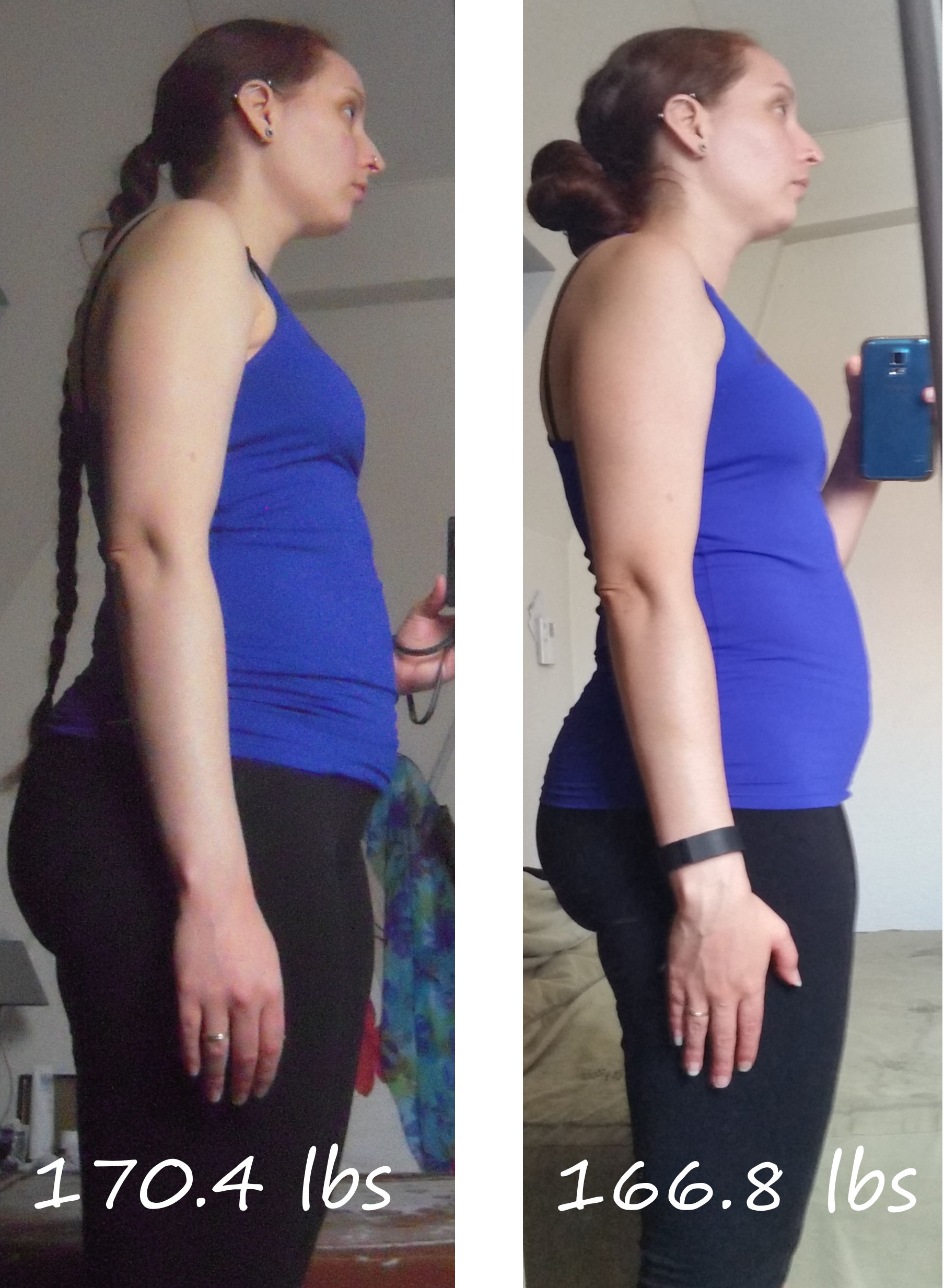
by Trish Adams | Oct 1, 2015 | Testimonials, The Journey
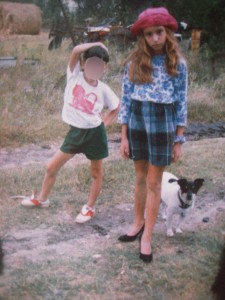
Me as a kid, the toothpick.
Growing up I was always teased about how thin I was. I was called “tooth pick” by the kids at school and one of my family members kept telling me that I should be a model because I was so thin (it as supposed to be a compliment).
I never worried about how much I ate. To be honest, I wasn’t really in control of my food growing up. We were poor and we weren’t allowed to eat what we wanted, when we wanted. My brothers and I ate what was served to us, and if we were still hungry then too bad. When our financial situation improved, we still were not allowed to eat when we wanted. That’s just the way it was. The moment we got our hands on junk food or soda somewhere else (like my grandmother’s house), we went crazy. Cake, candies, cookies, were all devoured instantly without a care in the world.
I never worried about how clothes fit me in high school. I just grabbed a small or medium size and went with it. Pretty much anything fit. As I started to spend more time with friends whose food was less controlled, I got carried away with fast food that I didn’t get to eat often. I’d drink a 12 pack of soda in a weekend at their house BY MYSELF. I ate spoonfuls of Nutella from the jar in front of the computer while playing video games.
After about a year of that, I exploded my favorite pair of jeans. It wasn’t a big deal because I was still thin, but it shocked me a bit. So I threw myself at pitiful dieting by drinking Slimfast (like it was a drink and not a meal replacement.. oops) and diet sodas (which I would later learn were the cause of my migraines).
The problem was I had spent so much of my life cut off from these foods I wanted to eat and try, that it was as if I was making up for lost time somehow. I never learned to be in control of my own food. I was also depressed which didn’t help and I engaged in a lot of mindless and boredom eating.
Years later, when I found myself married to Frenchman living in France and unable to speak the language, my food problem got worse. We survived off pasta and I ate my meals in front of the computer when I was alone.
While I somehow managed to still remain thin in high school, it all started catching up to me really quickly. His family started making comments about my weight, and the older adults would offer me clothes that were too big for them.
I became offended. At the same time, I was unable to buy clothing that fit. French people are generally far more thin and short than we are in the US, and if my height wasn’t already a problem, my weight was. I was having to wear clothes for older ladies to have things that fit which is not what any young 20 something wants to wear.

The picture that changed everything.
I ended up pregnant and my weight went up even more. At first, I was actually LOSING weight (nausea left me without an appetite), but after complaints from my doctor, I started forcing myself to eat and took on even more weight. When I saw photos of myself after my daughter was born, I could stand still no longer. Something had to be done.
Around the birth of my daughter, I met another young American woman in my town who had a child recently as well. We got along great and she would tell me how hard she was working to lose weight. I thought she already looked really great. She had a gym membership (which I could not afford) and lived off smoothies and health food and all that stuff. We decided to try to lose weight together, and she would get on my case any time I had a soda or a burger or something like that. So I started trying to eat like her, and with the recent approval of Alli in France, we jumped on that diet.
Being on Alli was hard. I was really hungry. You were limited to 15 grams of fat per meal or you would suffering horrible embarrassing consequences (I’m sure you can find more details on Wikipedia). I learned quickly which foods were ok and lived off a lot of salad. I went from about 180lbs (or more, I had stopped weighing myself at some point) to 155lbs and loved the way I looked. I was hungry, but I looked good. The problem with pills and things is you can’t do that forever. Alli was expensive, and I thought that since I had lost the weight, I would keep it off. Boy, was I wrong.
My friend returned to the US and I was stuck again alone (sans friends) in France with no one to get on my case. I continued to eat like I had with Alli, but my weight wouldn’t budge. It started slowly creeping up and with that I became discouraged and slowly stopped trying. I gained back to 185 lbs.
In 2013, I joined My Fitness Pal determined to hold myself accountable. I started on the 1200 calorie diet that it threw at me, which reminded me a lot of when I was on Alli, and I was miserable. I became grumpy, grouchy, and was having constant headaches. I used RunKeeper to track any tiny bit of walking I did to hope that I could eat more food. Digging in the forums didn’t help me at first. I found so many topics of people saying how easy 1200 calories was to live off of if you ate the right foods and “ate clean”. That I just needed to wait for my stomach to get back to a normal size and I would be fine. Despite my best efforts and following MFP, I was not losing weight. I was about to give up again or just starve myself to get results.
Further digging would lead me to posts about IPOARM and EM2WL. People who ate REAL food and didn’t deprive themselves (which I knew from experience leads to binging). People who maybe didn’t weigh 115lbs or anything, but looked like a million bucks. They were healthy, they were fit and they weren’t going to extreme measures to get those results. I read a lot of the science behind it, and testimonials. I picked up the starter kit when it was offered for free one day and read it. It made sense. I was scared to up my calories (as everyone is at first), but I felt I I had nothing to lose. I wanted in.

After a few months of EM2WL, I’m daring a crop top!
How long have you been on this journey?
I’ve been working on trying to lose weight for years. I can’t even remember anymore. Regarding EM2WL specifically, I started at some point last year. I admit it hasn’t been perfect. During the metabolism reset I lost 5lbs. It was crazy, I was ecstatic. However, I had surgery for an umbilical hernia repair and for a while I let the calorie tracking slide as I needed to recover. After a few months I took a look at the scale and wasn’t happy. Over all these years of attempted weight loss, I developed an unhealthy relationship with the scale (which I am still working on) and when my weight went up and then got stuck, I fell back into eating even less calories.
It was only at the beginning of this year, that I took the cliché New Year’s resolution to do EM2WL, as that had actually worked before and was sustainable. I intended to actually STICK to it. I wanted to work on doing strength training as well. Unfortunately, (before I even started trying to strength train) my hernia had come back, but I decided to try to take it slow and do what I could.
I won a Fitbit in a “New Year, New You” contest which helped beat into my brain that I was actually doing far more activity than I thought (I don’t have a car and walk everywhere) and that eating more wasn’t going to ruin me.
I understand that you have dealt with disordered eating in the past. How were you able to overcome it?
For me to admit it was disordered eating still doesn’t register. I wasn’t eating well. I had a bad relationship with food. I would eat very little and then binge. It was bad and self-defeating. I found that when I allowed myself some of the things I wanted (burger, soda, cake or what have you), I was less out of control later. After I upped my cals, I found that I could make room for the things I wanted. I’d be more reasonable with portions. Instead of eating 5 slices of pizza, I’d have 2, for example.
There were also days where I went over. I stopped letting that control me. If I noticed I was over, I made sure to ask myself whether I was really hungry or just being bored or gluttonous the next time I wanted food. The next day, I tried to do better, but I stopped punishing myself. I still have days where I am over, I accept that not every day will be perfect and try to do better the next day. It’s just food, it isn’t a crime.

Heather is rocking leggings – clothes she never thought she could wear.
When did you first learn that you needed to eat more to reach your goals? What was your original response?
When I started reading about TDEE and BMR I learned that I was not eating enough at all, that was the end of 2013. I was skeptical at first, but I was just so hungry. I was really happy to get to eat over 1200 cals and was glad that science seemed to back that up. I figured if what I had been doing wasn’t working (and it wasn’t), what did I have to lose with trying this method?
As I’m a non-working housewife who tends to play a lot of video games and didn’t exercise much, I had estimated that I didn’t do much all day. I worked out my TDEE to be 1900 cals or so, and my BMR around 1500. Based off of that I was eating at about 1560 cals a day. It wasn’t until I acquired my Fitbit Charge this year that I found of my TDEE was actually between 2300 and up to 2800 cals a day (depending on how many errands I had to do). If I thought 1560 was ok to eat at, I was ecstatic to be able to eat at over 2k cals a day and even more when it actually WORKED.
How did others around you act about your decision to discard the usual low cal methods for weight loss?
Honestly? My husband thought I was just finding an excuse to not stick to my goals. He was tired of me complaining about my weight. He told me “do something about it, or stop complaining”. He said it didn’t matter to him what I did, but that I wasn’t allowed to complain about it while I was doing nothing to change it. So when I said I was going to eat more after I had been working on eating less, there was some eyebrow raising. When I tried to explain it to people, they didn’t seem to follow. They’d regurgitate something about “eating clean” or that I needed to go running at least once if not twice a week for results. Eventually, I just stopped saying anything and quietly stuck to my goals.
After my progress though, I’m willing to fight tooth and nail and shout from the roof tops that I eat more without any extreme measures.
How did your body react to the initial increase in cals?
During the metabolism reset, I lost 5lbs. I know it isn’t typical, but I was really happy. The only problem was it set a high precedent for me and the first time I attempted the EM2WL method and when I actually lowered my cals more and it didn’t seem to move much. I got disheartened rather quickly.
I know now with the help of my Fitbit that my “reset” was probably actually closer to a TDEE -15% goal as I had poorly estimated my TDEE. That would explain why things slowed down when I cut that by another 15%. I could honestly probably use another bit of a reset (a real one this time ;) ) as I have been eating at a deficit for a while now.

Heather is shrinking!
Did your family notice or comment on any changes once you upped your calories for a period of time?
At some point during my first attempted run through EM2WL I was back in Texas visiting my family for 2 months. I was eating everything. There were so many foods I missed, like tacos! My mom would get on my case and tell me I was overdoing it. That I was going to lose all my progress I had made because I was eating too much. I had days where I went over, but I was generally mindful. I was having a hard time making her understand that my progress was actually due to eating more. Her and my dad rolled their eyes at me, they were not convinced. They see my progress, but just say things like “That won’t work for me”.
I know first hand that the weight loss industry has a lot of people convinced that deprivation is part of losing weight. I hope to keep showing that one doesn’t have to deprive themselves nor run themselves ragged to reach their goals. That weight is just a number on a scale and focus needs to be more on fat loss than weight loss. In time, I hope to change more minds.
Can you describe your typical workout schedule prior to EM2WL and today?
Prior to EM2WL when I was actively working on trying to lose weight, I was doing my usual walking that I do from not owning a car. I now know it is quite a bit (I have no issues getting 10k steps on a normal day and sometimes have over 20k). I was also going to run 3 miles once or twice a week with a friend. I combined that with cardio workouts from Your Shape Fitness Fitness Evolved 2012 (an xbox kinect exercise game) and did that 3 to 4 times a week.
In January this year when I resolved to follow EM2WL more closely, I decided to focus more on strength training. I grabbed myself some starting dumbbells (2 x 3 kg/6.6lbs, knowing I had to carry them home on foot lol) and picked back up Your Shape Fitness Evolved 2012. I’d start with general warm up type exercises (hula hooping, arm circles, squats etc) and then go for a full body strength routine that lasted about 13-16 minutes. That routine included things like bicep combo lunges, sumo squats and the like. I’d finish up with a 13 minute yoga routine to help with muscle soreness (and the days I didn’t, I regretted it!) with some more cool down stretches after. I did that twice a week on top of my daily errand walks (10k steps+ a day). Honestly, it was really easy. It made for about an hour of workout a week, not a lot at all!
However, by the end of April I had to give up the strength training as my hernia had gotten pretty bad again. So progress has slowed a bit, but I’m trying to be better about my food in general at least. I hope to get this hernia addressed again (with a mesh instead this time) so that I can work on strength training again as the results were so much more pronounced and I really enjoyed it. It didn’t even take a lot to make a difference!
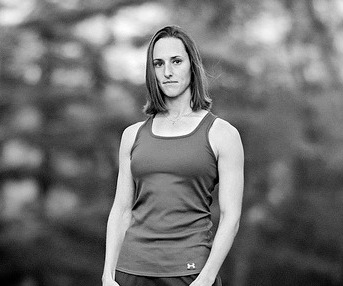
by Trish Adams | Jun 15, 2015 | Interviews/Guest Posts

EM2WL: I understand you suffered from disordered eating in the past. What was your “ah ha” moment where you decided that things had to change, and how did you start working on changing how you looked at exercise and eating?
Nia: The problem was, I knew for years things needed to change! I was unable to do so. I went to three different counselors, read numerous books, and tried other suggestions. However, none of those things worked. It wasn’t until I did things my way that it all started to improve. I stripped nutrition down to the bare essentials (eat mostly real foods, don’t have any forbidden foods, eat my favorite “treats” when I craved them, listen to my body and eat when I’m hungry and stop eating when satisfied). I also made my workouts exclusively about what my body could do. My goal was to improve my performance and get stronger.
I talk about this in more detail in the recent episode of the Lift Like a Girl Podcast.
E: Many clients find EM2WL after years of extreme dieting and/or exercise. What would you tell a woman that is looking for quick results? How do you convince them that the long slow road is the way to go for maintainable results?
N: Anyone can hop on the latest diet craze or fad and lose some weight. But I’d say 99% of the time people gain back what they lost, with interest, simply because it was unsustainable. The goal shouldn’t be to lose the max amount of weight as soon as possible. The goal should be to build a simple, sustainable, enjoyable lifestyle you can maintain long-term. After all, wouldn’t you rather be able to maintain your results 1, 5, and 10 years down the road instead of constantly yo-yo dieting?
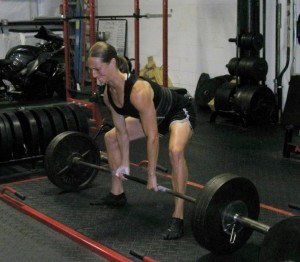 E: What do you tell women who are feeling “stuck” but seem to be doing all the right things – eating an adequate amount, and lifting weights, but feeling discouraged with what seems like a lack of progress? Especially when the scale is not moving.
E: What do you tell women who are feeling “stuck” but seem to be doing all the right things – eating an adequate amount, and lifting weights, but feeling discouraged with what seems like a lack of progress? Especially when the scale is not moving.
N: Get back to the basics. Oftentimes people are trying to do way too much all at once. Focus on just the few BIG things that will have the greatest impact and forget about the rest. Make sure you’re eating mostly real, delicious foods. Make sure you’re using the best exercises and focus on getting stronger.
And be honest with yourself. Are you really doing what you think you’re doing?
But when in doubt – keep it simple. Choose just 1-3 things to focus on exclusively for 4-8 weeks and track your progress.
E: For women that are looking for fat loss they are often surprised when strength training is recommended. Can you explain your philosophy behind using strength training as a method for fat loss?
N: Strength training helps burn fat and build muscle. Period. That’s what helps people get the “toned” look they desire.
But more importantly, strength training boosts self-confidence and body-image. It’s fun, motivating, and reveals to women the true strength they possess. I find that THOSE are the things that keep people coming back for more. And consistency is what really produces long-lasting fat loss.
E: Why do you feel that strength training is so important, especially for women?
N: Because of the additional benefits it provides that most people don’t even think about: improved self-confidence and body image. It’s a way of revealing and allowing women to appreciate and be proud of what their body can DO instead of obsessing over how it looks.
E: So, lastly, I have to ask, are you still moonwalking? I’ve checked your technique and it is flawless!
N: Every opportunity I get. :)
To hear more from Nia Shanks, visit her website or the Lift Like a Girl Podcast
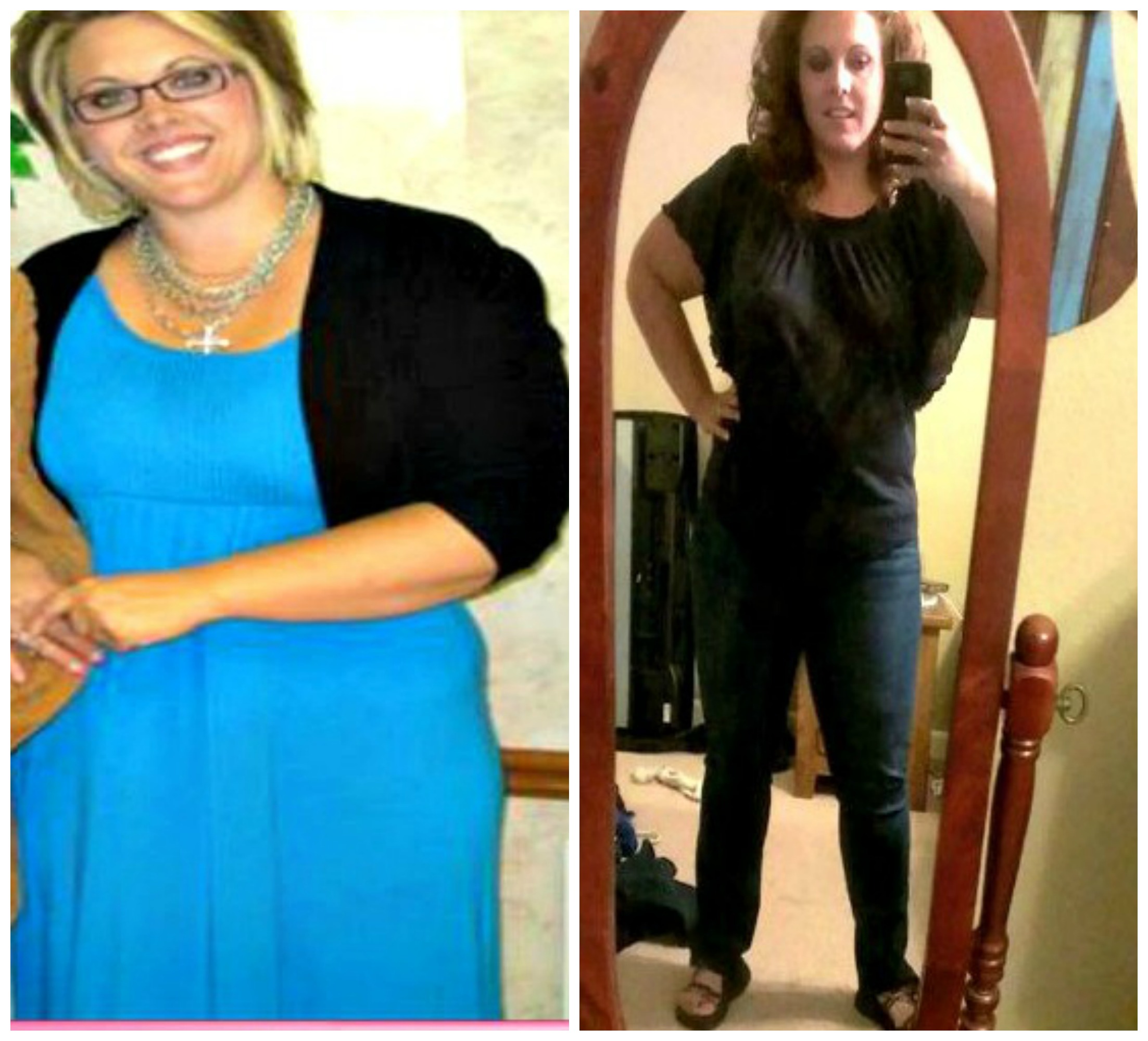
by Trish Adams | May 21, 2015 | Binge Eating, Interviews/Guest Posts, Testimonials, The Journey
 EM2WL: How long have you been on this journey?
EM2WL: How long have you been on this journey?
Mandie: I remember joining weight watchers during the summer between 5th and 6th grade. I always “wanted” to be healthy and fit. I honestly never knew how to accomplish that goal without severe restriction. I have been on this journey my entire life, the struggle has been very real.
How long have I been on the journey of eating more and moving more? I started that journey a few years ago. I was very unsure if it would really work. I approached it like any other diet at first because I honestly didn’t expect much to happen from it. Well, I guess I expected to lose a little weight and then gain a little weight because that seemed to be my life long pattern.
E: When did you first learn that you needed to eat more to reach your goals? What was your original response?
M: A couple of years ago I was going to a local gym where I was being taught to cardio my body into debilitation. I was participating in 30 day smoothie challenges, burpee challenges, plank challenges. I was working my body into injury and pain. The gym, of course, followed this type of pattern in their nutritional advice, (out of their scope of practice) so I was going on very few calories. I lost a little weight, but this formula for destruction wasn’t anything that I could do long term. It was still the restrict-binge cycle that I had always known. I was getting hurt constantly. I knew very little about how this all worked at the time. All I knew was eat as little as possible and move as much as I could. After an injury that put me out of the gym I started researching. I was tired. I was in pain. I was hungry. I wanted something more for my life. I started doing some research on how to rehab my injury. I started looking into how the body worked and studying how this magical thing called weight loss happens.
What I found blew my mind. I discovered this amazing thing called a total daily energy expenditure
(TDEE). This was the amount of calories I burned in a day (I had never really considered how many I burned in a day). I was eating around 1100 calories but was burning around 2500-3000 calories per day. I discovered that if I was in a coma the doctors would feed my around 1600 calories through a feeding tube.
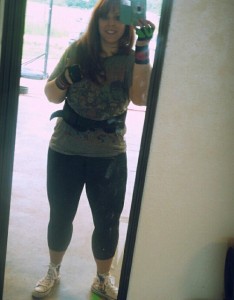 THIS blew my mind! How could I call myself healthy if I was eating less during my very busy life than a doctor would feed me in a coma. I, like most people, have been lied to by our culture that a woman eating anything over 1500 calories would gain weight at a rapid pace. Women believe this lie because we “think” we see this happening but what we really see is a perpetual cycle of starve-binge. We go on this crazy diets of 1200 calories and lose some weight, but somewhere along the way our bodies kick into survival mode and we start eating. We eat large amounts of calories trying to make up for our starvation time. We end up gaining our weight back and giving up… until we look in the mirror and decide we hate ourselves again and start the cycle all over.
THIS blew my mind! How could I call myself healthy if I was eating less during my very busy life than a doctor would feed me in a coma. I, like most people, have been lied to by our culture that a woman eating anything over 1500 calories would gain weight at a rapid pace. Women believe this lie because we “think” we see this happening but what we really see is a perpetual cycle of starve-binge. We go on this crazy diets of 1200 calories and lose some weight, but somewhere along the way our bodies kick into survival mode and we start eating. We eat large amounts of calories trying to make up for our starvation time. We end up gaining our weight back and giving up… until we look in the mirror and decide we hate ourselves again and start the cycle all over.
I decided to start trying to eat more consistent calories. I started this while trying to rehab a back injury so my start was scary. I gained approx. 13 lbs.. I was not able to do much moving at the time. I look back and giggle because basically I was just “eating more”. I backed off after several months and just ate at my TDEE for a very long time. I have to say though, allowing myself to just eat without the guilt and shame that I usually felt was a welcomed break. Along the way my back finally allowed me to start in on the weights and that is when great things started happening. I finally saw the promised land. I KNEW this was going to work. I KNEW I could do this forever. Eat. Lift. Repeat. YES PLEASE!
Somewhere during the process I also stopped looking at my body as “how small can I get” and I
started thinking “how awesome can I become in my performance”. I can not express how much that small mental switch has altered my life for the better.
E: How did others around you act about your decision to discard the usual low cal methods for weight loss?
M: I am actually laughing as I read this question. Everybody thought I was insane. I was told “you can’t have your cake and eat it too”. To that comment I now say.. “Actually I can”..
E: How did your body react to the initial increase in cals?
M: For women in our society we are taught to be hungry. We are taught it is a virtue to allow yourself starvation. I was no different. I had been on diets my entire life along with binge eating issues. I had been diagnosed in 2005 with anorexia. I had been on the pendulum of torture FOREVER. My body welcomed the break. I found it interesting that all it took was a shift in my mental status for me to be able to eat. I gained the approx. 13 lbs. before I decided to track and eat at my TDEE. My goal was obviously not to gain weight.
E: Did your family notice or comment on any changes once you upped your calories for a period of time?
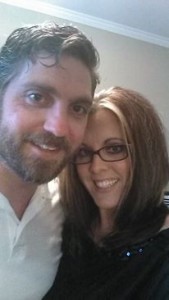 M: My husband was my biggest supporter. I think if my body had never changed he would have still
M: My husband was my biggest supporter. I think if my body had never changed he would have still
kept encouraging this lifestyle for me. Mentally I was at the best place I had ever been. Learning to accept myself enough to allow food in my life, even though I wasn’t at our cultures deemed size. That is a victory for most women. He loved my new found confidence and self worth. There were a few time that I would question myself and he would state very passionately to me “Eat The Food. Lift The Things.” <swoon>
He’s pretty great.
E: Can you describe your typical workout schedule prior to you learning to nourish your body and today?
M: I am laughing again. Oh the torture. I always believed that working out was suppose to be painful. I had that crazy belief that throwing up meant something good. I have done many different workout schedules but they were always inconsistent. I remember several times starting off on my bike for a good ride and having to turn around and come home because I was dizzy. I thought that was normal. I should have just grabbed a snickers.
I also remember the lowest point for me was around the time I was diagnosed with anorexia, I had made a decision to not workout because it caused me to get hungry. This makes me so sad now.
My workout schedule ran with how many calories I was allowing in my body because that determined if I got dizzy or blacked out. I didn’t want to eat enough to get through a full workout.. That would make me fat or fatter, depending on what season of life it was.
 E: As a busy mom of 5, how do you manage to stay on track with your nutrition and fitness? Any tips you can share with our followers?
E: As a busy mom of 5, how do you manage to stay on track with your nutrition and fitness? Any tips you can share with our followers?
M: Put yourself on the list. I wake up in the mornings and mentally go over my day, it is my informal to-do list. I make sure I am on that list. When I go buy groceries I no longer just ask my kids and husband what they would like. I buy the things I love to eat too. I put it in the budget. I am now worth being in our grocery budget. Crazy thing happened when I started buying healthier food. My kids started eating it.
I talk to a lot of moms who don’t have time for fitness or nutrition, or so they say. People think I am
crazy (or horrible) when I ask them “what if your child only did 2 activities instead of 4.” So that they can have a mother who gets to workout and focus a little time on her. There really is only so much time in a day and it is up to us to organize our lives in such a way that we are on the list of things to do for our families.
I do not think mothers see how important their own health is to their family. We are teaching our
children how to eat, how to move and how to treat themselves by our actions. When I realized that… it was huge to me.
E: What is the best way for our the EM2WL fam to get in touch or follow your journey ?
M: I usually hang out in my little community on Facebook called Women Are Hungry. Like most people I love to put my food and sweaty workout pictures up on Instagram so you will find me there as well. I love talking to to women about all things fitness, body image and habit changes so please feel free to hit me up!
I talk to so many women who are afraid to eat. I think when women realize that eating consistent
calories is so much better than the diet cycle:
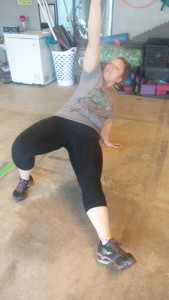 Day 1. fat and I need to lose weight
Day 1. fat and I need to lose weight
Day 2. I will eat only 1100 calories.
Day 3. I am awesome.
Day 4. I am hungry but will make it.
Day 5. I will just eat a little extra today
Day 6. WHERE IS THE FOOD.
Day 7. Eat ALL the food. Screw it.
The thing I find the most insane about this journey is that I haven’t gained any weight in over a year. I have spent my life gaining weight ( and losing and gaining and losing). I feel in control. I spent many years thinking weight loss was magic. It isn’t magic it’s science. I still have fat to shed and muscle to gain, but the great part about that is I know how to do it. I am no longer
on a time frame with my fitness and nutrition. It is just what I do. I no longer have an end
date. I don’t have a perfect body. I don’t have 12% body fat, however my imperfect body is
exactly where I want it to be right now.
Slow and steady is where long term success happens.

by Trish Adams | Feb 1, 2015 | Life Application: Monthly Calendars
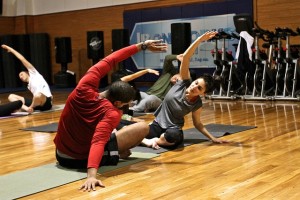 There are two areas that don’t seem to take center stage in our pursuit of being more fit, although they both play a key role with our progress – developing overall core strength and flexibility. I have definitely been guilty of this, especially when running short on time and saving core work for ‘later’ and don’t even get me started on how many times I’ve skipped stretching. While we seek to make gains in our lifting, we should allot time for core strengthening and flexibility activities, which actually assist other goals by improving our performance and reducing the risk of injury. So, this month we’re holding everyone, including myself, to task and challenging you to make both a priority!
There are two areas that don’t seem to take center stage in our pursuit of being more fit, although they both play a key role with our progress – developing overall core strength and flexibility. I have definitely been guilty of this, especially when running short on time and saving core work for ‘later’ and don’t even get me started on how many times I’ve skipped stretching. While we seek to make gains in our lifting, we should allot time for core strengthening and flexibility activities, which actually assist other goals by improving our performance and reducing the risk of injury. So, this month we’re holding everyone, including myself, to task and challenging you to make both a priority!
“It is true that big arms, shoulders, and legs are impressive, and a lot of training must be dedicated to these areas. Yet the trunk is the link between these areas, and the limbs can only be as strong as the trunk.” – Tudor Bompa
Core strength
Think of your core as a support system. Having a strong core improves strength in other areas of the body and reduces risk of injury. When thinking about your core, remember it encompasses more than just your “abs” or the six-pack area. The core muscles include the rectus abdominus and transverse abdominus, the obliques (external/internal), the muscles surrounding the spine, the hips and glutes, and the pelvic area. Pretty substantial! To build a strong and balanced core you need to use a variety of exercises and this month we’ll hit the core from all angles!
Stretching
Following an intense training session, it’s important to restore length to contracted muscles. Regular stretching keeps the muscles elongated, assisting with recovery between workouts. Maintaining good flexibility reduces the risk of injury and improves the mobility of joints and muscles. In addition to post-workout stretching, including 1-2 sessions of restorative yoga each week can also do your body good, activating muscles not often used.
Freedom from the Scale
 The scale has wrecked many good fitness journeys. For some, one undesirable reading can make or break your mood for the day and have you second-guessing all the non-scale progress you’ve made to that point. So, for that reason we hope you will take a break from the scale this month. Lock that bad boy up in the closet or simply take the batteries out. Enjoy a month not focused on how to get the scale to move!
The scale has wrecked many good fitness journeys. For some, one undesirable reading can make or break your mood for the day and have you second-guessing all the non-scale progress you’ve made to that point. So, for that reason we hope you will take a break from the scale this month. Lock that bad boy up in the closet or simply take the batteries out. Enjoy a month not focused on how to get the scale to move!
Freedom to Indulge
What’s a life without a little indulgence? Keeping some yumminess in your nutrition plan keeps it enjoyable and sustainable. This month we challenge you TO EAT THE CAKE! Seriously, plan to have a treat at least every week, being mindful to balance your macros for the day.
Food prep
Food prep does not have to be a major event where you spend an entire day cooking food for the week. Believe me when I tell you, a little goes a long way. Whether it’s making a batch of slow-cooked oats or an egg-bake for the week’s breakfast or cooking a couple pounds of protein for lunches or dinners, every little bit helps you to meet the goals you are pursuing. When things don’t go according to plan during the week, it’s great to have one less thing to think about and keeping some pre-cooked food on hand can help.
Eat to Fuel
If there is one pet peeve I have it is to see someone working so hard at their fitness, but not reaping the benefits of their labor. This is what happens when you are in the gym day after day, week after week, but yet not nourishing your body with enough food or nutrients. Obviously if you are cutting, you will be eating slightly less than normal, however, this is only short term and is not a substantial amount. Food is fuel for your body so don’t cheat it by only filling to half a tank!
 Positive thinking
Positive thinking
Progress in your thinking is equally if not more important to physical progress. Negative thoughts can slip into your mind before you may even realize it. This month we’ll challenge you to keep your thoughts positive by reflecting on your journey to this point, highlighting your successes, and finding activities that keep you inspired and motivated.
Are you ready for this challenge? Let’s do it!!
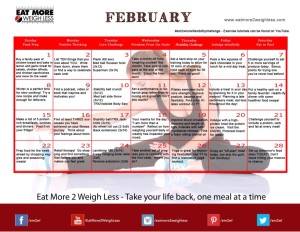
Click to enlarge!

by Trish Adams | Jan 30, 2015 | Consistency, Fat Loss / Cutting, Fitness Cycles (Periodization)
Those of us who understand the importance of having “seasons” (cycles/phases) in our journey, tend to spend fall and winter focusing on building muscle size and strength. In fact, it’s very common to align your training phases with the actual seasons, taking advantage of the cover up in the colder months and then leaning out for the summer. If you are in this camp you probably will start planning your cutting phase to start late winter/early spring, giving you plenty of time to trim down for summer and avoid a last minute panic. Whether this is your first cutting phase or 10th, these tips will set you up for a successful experience.
1. Less is not more
Even though cutting calls for a caloric deficit, one of your goals should still be to maximize food intake while still losing fat. Starting with a small deficit of 5-10% allows you to do just that. Jumping straight to a big deficit like 20% means that should you need/want to adjust your deficit, you will be eating even less food (say it isn’t so!). While larger deficits might get the scale moving more quickly in the short term, they are also harder to stick with and can easily backfire.
2. Just say no to extreme restrictions

You CAN enjoy treats during cut!
While cutting, you may choose to adjust your macro ratio, but it shouldn’t be so drastic where you go from eating 200g carbs to 50g or start putting foods like bread, bananas or your favorite treats on a banned food list! Overly restricting food groups can lead to an unhealthy relationship with food or, worse, eating disorders like binge eating. And, honestly, how long would you be able to maintain that? Remember, if you won’t be able to sustain it throughout your cut, it will offer little benefit. Lowering your calorie intake doesn’t mean eliminating food groups.
3. Keep rocking the protein
By consuming less calories you will encourage the body to use more of its own resources for energy, preferably fat stores. During the process, however, we want to minimize lean tissue loss as much as possible. Remember metabolically active tissue (aka muscle) boosts your metabolism rate. Staying on top of your protein intake will aid in keeping it around. In fact, you might consider adding a little extra protein.
4. Diet breaks do a body good!
Deficit eating should not become your new standard of eating. Plan to take diet breaks every 4-6 weeks or so and return to normal eating for a week or more. Extended periods of dieting will lead to a new LOWER maintenance. It may be tempting to continue eating at a deficit, especially if you are steadily seeing progress. Don’t do it. Take the break!
5. Fat loss does not equate to crazy cardio
 Many of us, especially those who have experienced weight loss in the past from doing extensive cardio, may think it is the perfect time to reintroduce cardio as the mainstay of our fitness program and, as a result, start adding more of it to our regimen. After all, we’re trying to create a a deficit, right? Wrong. This is a mistake! Recall what Alwyn Cosgrove, author of the best-selling series New Rules of Lifting, said about the hierarchy of fat loss – nutrition is most important and activities that do not maintain muscle or increase metabolism (aka cardio) are least important. The reality is that your training should continue to be based in strength. No need for excessive cardio shenanigans!
Many of us, especially those who have experienced weight loss in the past from doing extensive cardio, may think it is the perfect time to reintroduce cardio as the mainstay of our fitness program and, as a result, start adding more of it to our regimen. After all, we’re trying to create a a deficit, right? Wrong. This is a mistake! Recall what Alwyn Cosgrove, author of the best-selling series New Rules of Lifting, said about the hierarchy of fat loss – nutrition is most important and activities that do not maintain muscle or increase metabolism (aka cardio) are least important. The reality is that your training should continue to be based in strength. No need for excessive cardio shenanigans!
6. Manage other stress
Deficits are stressful to the body and can be stressful mentally. Plan for it by including more relaxing activities in your program, such as low intensity/casual walks, meditation or whatever helps you to unwind. Make sure you are getting sufficient quality sleep as well. Here’s a great app that can help you establish a meditation practice www.headspace.com.
7. Outsmart your deficit
No one likes to feel deprived and one way to avoid those feelings is by including more nutrient dense foods in your meals! Keeping the volume of food high with low-calorie high fiber foods like veggies and fruit may help you avoid those diet-like feelings. Bonus: You’ll boost your nutritional profile at the same time.
8. Have patience and manage expectations

Like every other phase of your fitness journey, cutting requires time, consistency and patience. If it is your first time cutting, you may have high expectations, however, just like building muscle takes time, losing fat does as well. Don’t expect your clothes to be suddenly falling off you after two weeks. You can speed the process up by truly being consistent with your efforts and keeping a positive mindset.
9. Remember, you are an individual
If you are starting your cutting phase with a friend or are following someone else’s journey via social media, resist the urge to start comparing your progress. It is tempting, but it can also be the perfect set up for disappointment. Two people following the same program, eating the same foods, etc. can yield very different results. Think about a few of the factors that come into play here – age, weight, height, genetics, body composition, hormone balance, lifestyle habits, etc. Don’t fall into the trap of judging your progress by another’s. Whether fast or slow, celebrate your progress!
10. Look at the big picture
Of you that is! Make sure that you are taking progress pics. Very often we zoom in on our (not so) favorite trouble spots, not noticing changes taking place in other areas. Our bodies really don’t care that you’d like to trim a few inches off your thighs or tummy. Fat loss happens where it happens. Period. Make sure you’re looking at the big picture to truly assess your progress.
Bottom line: your fat loss (cutting) phase, just as any other phase in your program (muscle building, maintenance, reset, chill) should have a beginning and an end. Staying in any one phase for too long can have adverse effects (read: no ONE phase will give you *all* the results, so cycle through them for continued results).
Take your phases slow and steady. Approach with INTENTION, then take a break. Be diligent in developing the habits you need (in the kitchen and in the gym), but resist the urge to focus solely on calorie burns or excessive cardio. Use some or all of these tips and you will be on your way to killing your next cut!
Plugin by Social Author Bio



















 Positive thinking
Positive thinking




Recent Comments